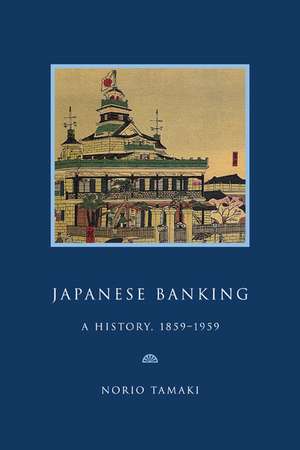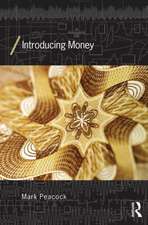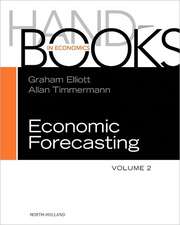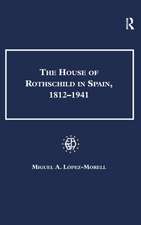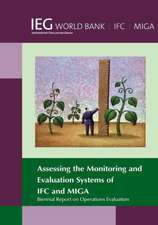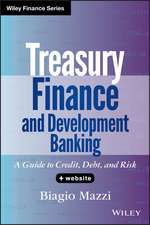Japanese Banking: A History, 1859–1959: Studies in Macroeconomic History
Autor Norio Tamakien Limba Engleză Paperback – 9 noi 2005
| Toate formatele și edițiile | Preț | Express |
|---|---|---|
| Paperback (1) | 288.04 lei 6-8 săpt. | |
| Cambridge University Press – 9 noi 2005 | 288.04 lei 6-8 săpt. | |
| Hardback (1) | 953.27 lei 6-8 săpt. | |
| Cambridge University Press – 6 sep 1995 | 953.27 lei 6-8 săpt. |
Din seria Studies in Macroeconomic History
-
![Teach Your Kids about Countries [Vol4 ]: Version Adaptada Al Castellano Actual Por Rafael Antunez y Raul Alonso](https://i3.books-express.ro/bs/9781480268180/teach-your-kids-about-countries-vol4.jpg) Preț: 61.51 lei
Preț: 61.51 lei -
 Preț: 167.96 lei
Preț: 167.96 lei -
 Preț: 95.31 lei
Preț: 95.31 lei -
![Teach Your Kids about Countries [Vol 25]: Version Adaptada Al Castellano Actual Por Rafael Antunez y Raul Alonso](https://i0.books-express.ro/bs/9781480268401/teach-your-kids-about-countries-vol-25.jpg) Preț: 61.51 lei
Preț: 61.51 lei -
 Preț: 53.96 lei
Preț: 53.96 lei -
![Teach Your Kids about Countries [Vol8]: Version Adaptada Al Castellano Actual Por Rafael Antunez y Raul Alonso](https://i2.books-express.ro/bs/9781480268227/teach-your-kids-about-countries-vol8.jpg) Preț: 61.70 lei
Preț: 61.70 lei -
 Preț: 125.81 lei
Preț: 125.81 lei -
 Preț: 64.79 lei
Preț: 64.79 lei -
 Preț: 131.58 lei
Preț: 131.58 lei -
 Preț: 86.92 lei
Preț: 86.92 lei -
 Preț: 95.96 lei
Preț: 95.96 lei - 9%
 Preț: 592.70 lei
Preț: 592.70 lei -
 Preț: 74.52 lei
Preț: 74.52 lei -
 Preț: 238.93 lei
Preț: 238.93 lei -
![Teach Your Kids about Countries [Vol 22]: Version Adaptada Al Castellano Actual Por Rafael Antunez y Raul Alonso](https://i2.books-express.ro/bs/9781480268371/teach-your-kids-about-countries-vol-22.jpg) Preț: 61.51 lei
Preț: 61.51 lei -
 Preț: 54.03 lei
Preț: 54.03 lei -
 Preț: 46.84 lei
Preț: 46.84 lei -
 Preț: 92.61 lei
Preț: 92.61 lei -
![Teach Your Kids about Countries [Vol2]: Version Adaptada Al Castellano Actual Por Rafael Antunez y Raul Alonso](https://i1.books-express.ro/bs/9781480268166/teach-your-kids-about-countries-vol2.jpg) Preț: 61.51 lei
Preț: 61.51 lei -
 Preț: 135.03 lei
Preț: 135.03 lei -
 Preț: 75.99 lei
Preț: 75.99 lei -
 Preț: 104.33 lei
Preț: 104.33 lei -
 Preț: 130.65 lei
Preț: 130.65 lei -
 Preț: 201.10 lei
Preț: 201.10 lei -
 Preț: 83.38 lei
Preț: 83.38 lei -
 Preț: 63.20 lei
Preț: 63.20 lei -
 Preț: 177.10 lei
Preț: 177.10 lei -
 Preț: 56.92 lei
Preț: 56.92 lei -
 Preț: 40.48 lei
Preț: 40.48 lei -
 Preț: 62.62 lei
Preț: 62.62 lei -
![Teach Your Kids about Countries [Vol13]: Version Adaptada Al Castellano Actual Por Rafael Antunez y Raul Alonso](https://i2.books-express.ro/bs/9781480268272/teach-your-kids-about-countries-vol13.jpg) Preț: 61.51 lei
Preț: 61.51 lei -
![Teach Your Kids about Countries [Vol 17]: Version Adaptada Al Castellano Actual Por Rafael Antunez y Raul Alonso](https://i2.books-express.ro/bs/9781480268326/teach-your-kids-about-countries-vol-17.jpg) Preț: 61.51 lei
Preț: 61.51 lei -
![Teach Your Kids about Countries [Vol 5]: Version Adaptada Al Castellano Actual Por Rafael Antunez y Raul Alonso](https://i4.books-express.ro/bs/9781480268197/teach-your-kids-about-countries-vol-5.jpg) Preț: 61.51 lei
Preț: 61.51 lei -
 Preț: 123.49 lei
Preț: 123.49 lei -
 Preț: 59.67 lei
Preț: 59.67 lei -
 Preț: 96.04 lei
Preț: 96.04 lei - 8%
 Preț: 470.07 lei
Preț: 470.07 lei -
 Preț: 96.45 lei
Preț: 96.45 lei -
 Preț: 55.99 lei
Preț: 55.99 lei -
 Preț: 69.21 lei
Preț: 69.21 lei -
 Preț: 72.83 lei
Preț: 72.83 lei -
 Preț: 208.23 lei
Preț: 208.23 lei -
 Preț: 88.56 lei
Preț: 88.56 lei -
 Preț: 51.36 lei
Preț: 51.36 lei -
 Preț: 93.90 lei
Preț: 93.90 lei -
 Preț: 51.11 lei
Preț: 51.11 lei - 20%
 Preț: 45.72 lei
Preț: 45.72 lei -
 Preț: 212.46 lei
Preț: 212.46 lei -
 Preț: 71.19 lei
Preț: 71.19 lei
Preț: 288.04 lei
Nou
Puncte Express: 432
Preț estimativ în valută:
55.12€ • 57.66$ • 45.79£
55.12€ • 57.66$ • 45.79£
Carte tipărită la comandă
Livrare economică 03-17 aprilie
Preluare comenzi: 021 569.72.76
Specificații
ISBN-13: 9780521022330
ISBN-10: 0521022339
Pagini: 312
Ilustrații: 1 map 10 tables
Dimensiuni: 154 x 230 x 21 mm
Greutate: 0.46 kg
Ediția:Revised
Editura: Cambridge University Press
Colecția Cambridge University Press
Seria Studies in Macroeconomic History
Locul publicării:Cambridge, United Kingdom
ISBN-10: 0521022339
Pagini: 312
Ilustrații: 1 map 10 tables
Dimensiuni: 154 x 230 x 21 mm
Greutate: 0.46 kg
Ediția:Revised
Editura: Cambridge University Press
Colecția Cambridge University Press
Seria Studies in Macroeconomic History
Locul publicării:Cambridge, United Kingdom
Cuprins
Preface; Genealogy of leading Japanese banks 1859–1959; Abbreviations; Part I. A Bankrupt Shogunate 1859–68: 1. Japanese merchant bankers: Ryogae; 2. A bankrupt regime; 3. Ryogae, struggling for survival?; 4. The arrival of Western banking; Part II. The Meiji Restoration: Monetary Confusion and Banking Experiments, 1868–81: 5. The first banking experiment; 6. The national bank system: American influence; 7. The origins of ordinary banking: another bank mania; 8. Search for stability: the last bank controversy; Part III. Matsukata, the Wizard of Japanese Banking 1881–97, the Yokohama Specie Bank (1880), and the Bank of Japan (1882): 9. The Bank of Japan, or Nichigin; 10. The Yokohama Specie Bank or Shokin; 11. Consolidation and expansion; 12. The adoption of gold standard; Part IV. The Japanese on the London Money Market, 1897–1911: 13. The 'Siamese twins': Nichigin and Shokin; 14. Special banking; 15. Banking at the end of the Meiji era; 16. Banking and the securities market; Part V. War: The Japanese Boom Years, 1911–19: 17. Bank of Japan money supply; 18. The expansion of special banking; 19. Ordinary and savings banks: the search for strength; 20. Other financial sectors in the boom years; Part VI. Crisis and the Road to War, 1919–37: 21. Post war collapse, 1919–23; 22. 1923 catastrophic earthquake, 1927 financial disaster, and the new Bank Act; 23. Financing heavy industries; 24. The challenge of militarism and a change of roles for Nichigin and Shokin; Part VII. Complete Commitment, Struggles, and Defeat, 1937–45: 25. War budgets and the mobilisation of national resources; 26. Extraordinary banking business during the national emergency; 27. Crisis, 1945; Part VIII. American 'Democratization' and the Search for Growth, 1945–59: 28. MacArthur's directives; 29. Remaking the banking system: the Japanese vs. the Americans; 30. Rise of governmental banking and the search for stability: the Japanese initiatives; 31. The post-war system; 32. An extraordinary century, 1859–1959; Appendices; Notes; Bibliography; Index.
Recenzii
"...a useful addition to all banking and finance collections." Choice
"This book offers a useful overview of Japan's banking institutions as they evolved....it provides material not readily accessible in other English-language literature. The author also does a good job of setting the development of Japanese banking into the larger context of Japan's modern history. The result is a book...too thoughtful to dismiss as superfiical. It would be a mistake, however, to understate the value of the book. This book treats one aspect of the problem from a perspective that is thoughtful, thought-provoking, and not mired in the theoretical assumptions that shape much Western literature on the subject. A careful reader will find much in it about which to think." Elizabeth P. Tsunoda
"This book offers a useful overview of Japan's banking institutions as they evolved.... Drawn largely from Japanese sources, it provides material not readily accessible in other English-language literature. The author also does a good job of setting the development of Japanese into the larger context of Japan's modern history. A careful reader will find much in it about which to think." Elizabeth P. Tsunoda, The Historian
"This book offers a useful overview of Japan's banking institutions as they evolved....it provides material not readily accessible in other English-language literature. The author also does a good job of setting the development of Japanese banking into the larger context of Japan's modern history. The result is a book...too thoughtful to dismiss as superfiical. It would be a mistake, however, to understate the value of the book. This book treats one aspect of the problem from a perspective that is thoughtful, thought-provoking, and not mired in the theoretical assumptions that shape much Western literature on the subject. A careful reader will find much in it about which to think." Elizabeth P. Tsunoda
"This book offers a useful overview of Japan's banking institutions as they evolved.... Drawn largely from Japanese sources, it provides material not readily accessible in other English-language literature. The author also does a good job of setting the development of Japanese into the larger context of Japan's modern history. A careful reader will find much in it about which to think." Elizabeth P. Tsunoda, The Historian
Descriere
This book, first published in 1995, provides a full account in English of the Japanese banking industry from 1859–1959.
